How to Go Green in Paris: A Comprehensive Guide
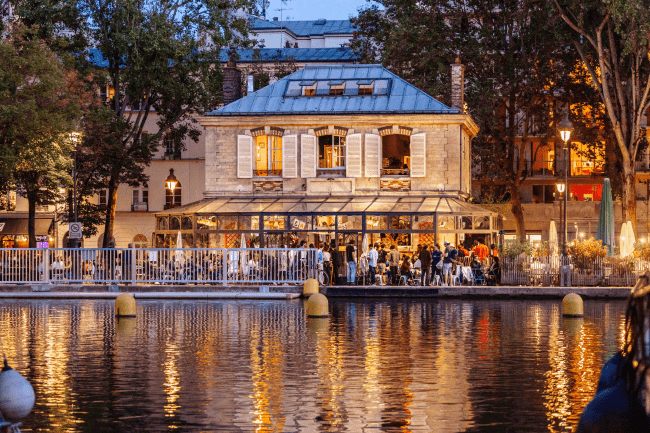
Paris mayor Anne Hidalgo and the active green players in her municipal government have wide-ranging plans for Paris to become a sustainable, resilient and carbon-neutral city. Smaller community initiatives are helping the city reach that goal. With help from these grassroots activists, it’s easy being green in Paris.
Third Spaces
Based on the three Rs of “reduce, reuse, recycle,” La REcyclerie transformed an old railway station into a thriving “third place” – neither home, nor work. Apart from being a hip canteen, the venue also has an urban farm located by the old train tracks. There’s a recycling/upcycling workshop where broken things can be mended. The REcyclerie is used for exhibitions, classes and conversations where people from all walks of life can meet.
83 Boulevard Oranano, 18th
Another thriving “third place” is the Le Pavillon des Canaux. In Paris where a majority of inhabitants live in small apartments, these “third places” are important, making it possible to forge links with others. Customers can use their premises like an office or enjoy a calendar full of activities, such as cooking and yoga classes, book clubs and lectures. Le Pavillon des Canaux sums it up this way: “it is a place where you can see an exhibition, have a drink, have brunch, take part in a drawing workshop, attend a concert.”
39 Quai de la Loire, 19th
Food Equity
Propelled cleanly and silently down Paris’s northern canals is the Marché sur l’Eau. Just like the old days, this floating market brings city dwellers quality fruit, vegetables and other kitchen essentials grown and prepared within the Île de France. Docking at various spots along the Canal d’Ourcq and the Bassin de la Villette, the Marché sur l’Eau is met by Parisians who have pre-ordered a weekly veggie basket, restaurateurs, chefs, and locavores curious to experience what’s in season. Even their boat Les Deux Brigands is 100% sustainably fueled. A recent initiative has the Marché sur l’Eau freighting organic waste with them on their return trip, sourced from Parisian brasseries and restaurants in the 10th and 19th arrondissements. Farmers in the banlieues use this would-be compost thereby creating a circular economy.
Every year Parisians throw out 35,000 tons of organic waste and even more packaged food. Since 2016 large grocery stores in France have been banned from throwing away unsold food and must redistribute unsold items to people in need. Restaurants are reinvigorating their businesses by sourcing locally, reducing waste, and going carbon neutral. Apps like Too Good to Go feed customers instead of feeding the landfill, by accessing end-of-night meals from restaurants and bakeries. Plus, Paris work canteens must provide a healthy, equitable, and affordable food plan. These food services must include one daily vegetarian option for those employees wanting to make a smaller carbon footprint.
À Table Citoyens is a community food-share association that allows citizens access to good, healthy food at a fair price with the opportunity to learn about its preparation. Through its Baluchon project, catered meals cooked from fresh local and seasonal products are shared à table, where customers can experience the importance of living well together.
View this post on Instagram
The RECHO – Refuge Chaleur Optimisme – is a solidarity project led by cooks and catering professionals which aims to forge community links. They’ve been working since 2016 to provide a dignified welcome for people in exile in throughout Europe. They welcome everyone at the pay-what-you-can buffet. The Recho Table can be found at the 51 Blvd Exelmans in the 16th arrondissement.
Green Restaurants, Cafes and Lunch Bars
Being green in Paris means turning your back on international food chains that produce millions of tons of waste. Sampling the local cuisine contributes to a thriving culture and helps the home -grown economy. An environmentally friendly menu is easy to find in Paris.
Yuman offers enlightened cuisine at their 100% biological restaurant in an up-and-coming pocket of the 13th arrondissement. They focus on a colorful local and organic fare. Non-vegetarian and vegetarian dishes, some gluten-free and others dairy-free are available. A tempting entrée might include an avocado salad, with shrimps, mangos and peanuts or higher welfare sausage with onions, rosemary and seasonal vegetables. What’s more, everything about Yuman is environmentally friendly: filtered water, recycled furniture, recycled waste, and delivery by tricycle. Behind the scenes, Yuman’s suppliers and farmers are involved in preserving biodiversity.
70 rue Chevaleret, 13th
La Table de Colette, close to the Pantheon, is a stylish eco-friendly restaurant. The chef aims for carbon neutrality by limiting waste and using green electricity. The CO2 impact is listed next to each item on the daily market menu where vegetables star and meat is the mere accompaniment.
17 rue Laplace, 5th
View this post on Instagram
Sol Semilla depends on fresh fruit and vegetables for their organic, vegan and gluten free cuisine. Their dish of the day includes superfoods like acai, spirulina, and purple corn, which bring forth colours, fragrances and precious nutrients. Raw-food options are available and their superfoods are sold on site. 3 Rue des Vinaigriers, Paris 10th.
All of the dishes at Ima Cantine are homemade and mindfully prepared. Enjoyed at this little weekday café are salad selections made from roasted eggplant, curried cauliflower, quinoa, carrots and cranberries.
39 Quai Valmy, 10th
Kitchen, in the center of Paris, is a vegetarian juice bar and café attracting the lunch crowd with its rainbow of inventive recipes.
74 rue Gravilliers, 3rd
Soya Cantine Bio a trendy spot open for lunch and in the evenings which offers their take on world food such as hummus, couscous, green mezzes and vegetarian curry.
20 rue de Pierre Levée, 11th
View this post on Instagram
Oozing with curb appeal are the lunch bars called La Guinguette d’Angèle. Each is a window to healthy, gourmet and gluten-free food. Using local and seasonal products and the principles of naturopathy, these tiny canteens offer the best food to their customers and respect the land. Proprietor Angèle Ferreux-Maeght is the name behind six cookbook titles and an online artisanal grocery shop. Two take-out counters in the 1st and 9th arrondissements can be found at 34 rue Coquillère and 7 rue Cadet, respectively.
An amazing array of snacks, salads, soups and detoxifying juice concoctions can be found at Judy, Maisie Café, Supernature and Wild and the Moon.
Zero-waste shops and “green” grocers
On the initiative of Zero Waste France, La Maison du Zéro Déchet wants customers to stop being wasteful and start being green and their shop provides the needs for them to reduce their household waste to zero. This green market, café and resource centre is at 1 passage Emma Calvé/Jaqueline Giraud in the 12th.
Welcome Bio Bazar is a green concept store that sells housewares to support an eco-lifestyle. There’s nary a plastic item in sight.
13 Rue Boulle, 11th
View this post on Instagram
Altermundi, found through the city, is another responsible housewares shop offering “another world” with everything from table wares to jigsaw puzzles created from renewable materials. They respect both the human being and of environment. They treat their suppliers equitably and form long-term partnerships with small scale craftspeople.
Aujourd’hui Demain is a vegan concept store and coffee shop. Ethical food, fashion, cosmetics and books are for sale here. Happenings include screenings, pop-up shops, tastings and book signing.
42 rue du Chemin Vert, 11th
Le Nouveau Robinson shops are dotted throughout the map of the city. It’s a subscriber food co-op, attentive to the needs of customers and their own employees. Also easy to find are the ethical chains, Bio C’ Bon, Biocoop, and Naturalia.
Almost half the fruits and vegetables that local French growers produce aren’t pretty enough for the plate and wind up in the dump instead. A company called Re-Belle turns these homely fruit into a wide variety of jams, chutneys and preserves.

Map of Le Nouveau Robinson shops, courtesy of their website
Eco-fashion
Sustainable shopping can be found in Paris. Gently used clothes are found at many boutiques throughout the centre of Paris for those who don’t mind reusing. Marché aux Puces Clignancourt- Saint Ouen is the enormous flea market to the north of the city. It’s like a city unto itself that offers every aspect of antique and vintage collecting. Emmaus, the second-hand charity shops, are dotted across the map of Paris and serve to protect those on the margins of society. Any method that keeps merchandise out of the landfill is a good thing.
View this post on Instagram
Then there are shops that use sustainable practices. French apparel made from the finest fair trade cotton is sold at Ekyog. The hip clothing company Le Slip Francais works with those with local know-how and their entire production chain is within France’s borders. Consuming less and consuming better, promotes an ethical and responsible economy.
Green Hotels
In a city with a vast range of hotels, some boast an eco-friendly environment. The Solar Hotel in the rue Boulard gets rave reviews. It’s low impact and low cost. Eden Lodge, at the other end of the price scale, features award-winning, sustainable innovations such as wood construction and highly efficient insulation and lighting. Its use of solar and wood pellet energy makes it one of Paris’s only zero-carbon hotels.
The Hotel Gavarni uses renewable energy only, and produces no carbon emissions. There is literally no need to throw in the towel at a green hotel – the use of water is regulated, and linens are washed only when needed. The Hotel Gavarni’s breakfast is deliciously organic. The staff too has taken the commitment to being green seriously. They take public transport or bike to work – the company pays the cost.
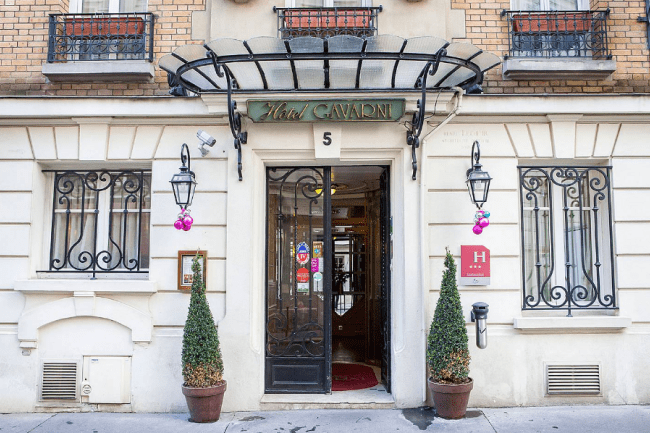
Exterior of Hotel Gavarni. Courtesy of Hotel Gavarni
Walking the Walk
Walk, rent a Vélib, hop aboard a bio-bus or the electrically powered Métro to any of the above and to any of Paris’s many green and interactive spaces.
Paris actively promotes engaging in hands-on ecology. Through the National Museum of Natural History (Musée national d’histoire naturelle) and Noé, an environmental association, residents can take part in the simple monitoring of butterflies, birds, and urban meadows, which in turn enables decision makers to update the status of Paris’s green spaces. An alternative is just to bask in the biodiversity of the Jardin de Plantes – it’s a 400-year-old garden of science open to the public.
The richness of Paris flora and fauna are revealed within the Parc Floral de Paris at the Maison Paris Nature (12th arrondissement). This wild corner of the city provides green resources for city dwellers wishing to invest in the biodiversity of the Île-de-France region. It includes a well-stocked library, educational tools, and training for all ages. Butterflies native to the region flutter freely in a large greenhouse. A marked footpath leads to a wetland, an urban wasteland, an insect “hotel”, nesting boxes, and an apiary.

Jardin des Plantes de Paris. Architect: Charles Rohault de Fleury, Public Domain
Le Paysan Urbain found at 14 rue Stendhal, a block from Pére-Lachaise Cemetery, is an urban farm in the heart of Paris. The grounds contain an ecology pavilion open to the public, a 660m2 biologically friendly greenhouse, and beds for herbs and flowers. Wild areas representing the biodiversity of wetland and prairie habitats are home to birds, butterflies and small mammals. The space is both bucolic and educational.
Going forward, Paris museums must plan to be carbon neutral. One green example, the Musée Quai Branly- Jacques Chirac, is famous for its architecture, namely the astonishing living, breathing, 800m2 vertical garden covering the building’s façade. It’s green designer Patrick Blanc’s most famous example of the mur végétal, containing 15,000 plants from 376 different species. By itself, the green wall is able to significantly improve the air quality of its surroundings while regulating the building’s temperature, both summer and winter. The Quai-Branly is also equipped with a 100% renewable energy system based on solar and geothermal energy.
For many, Paris can be seen as the sepia tones of an old bookshop, an hôtel particular dripping with golden ormolu, or a box of pink macarons – but as the citizens of the city strive to reinvent Paris into an eco-friendly place, Paris can also be seen as green.
Interested in the initiatives spearheading the Paris Climate Action Plan? Read Hazel Smith’s previous article on Sustainable Paris: The Green Revolution to see how the city hopes to achieve the goal of becoming carbon neutral by 2050.
Lead photo credit : Pavillon Des Cannaux Exterior at night © Quentin Chevrier
More in Anne Hidalgo, eco-friendly Paris, Plan Climat, Zero Waste
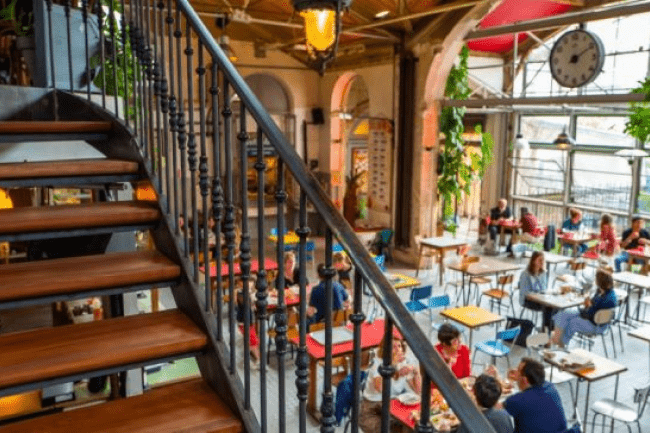
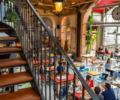
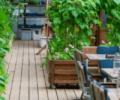

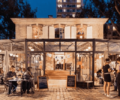
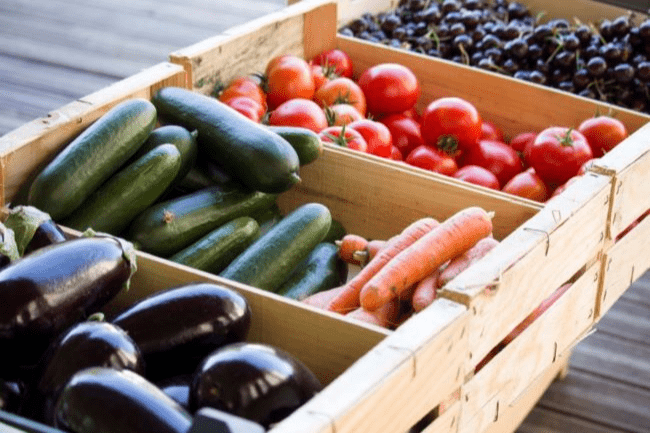






REPLY